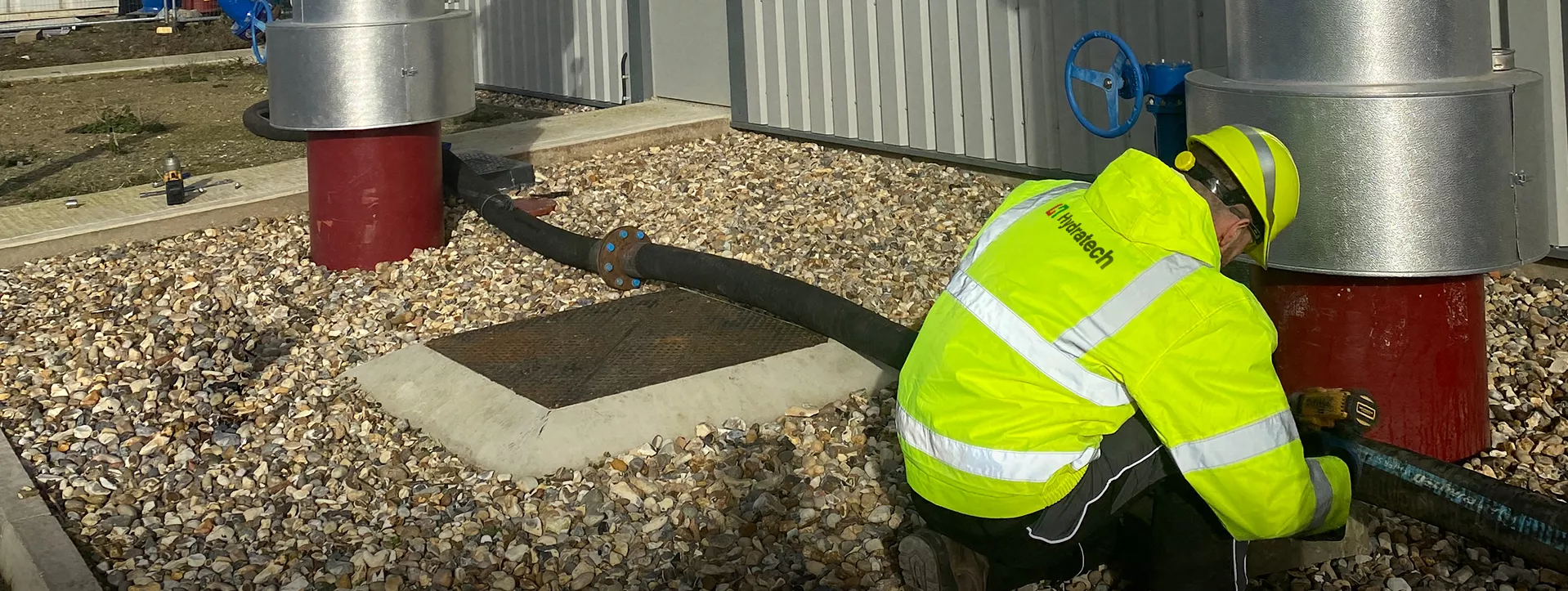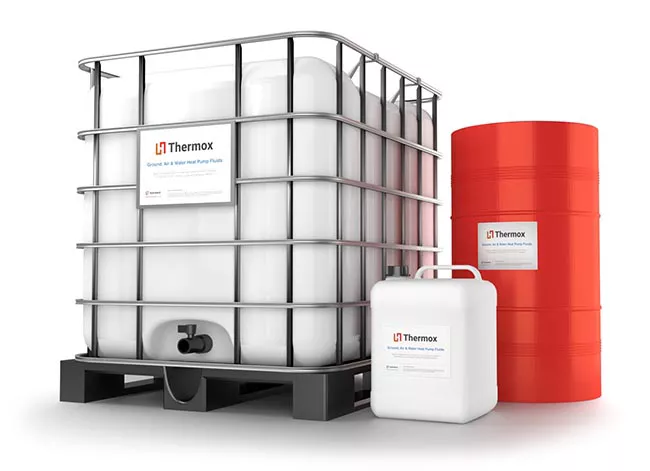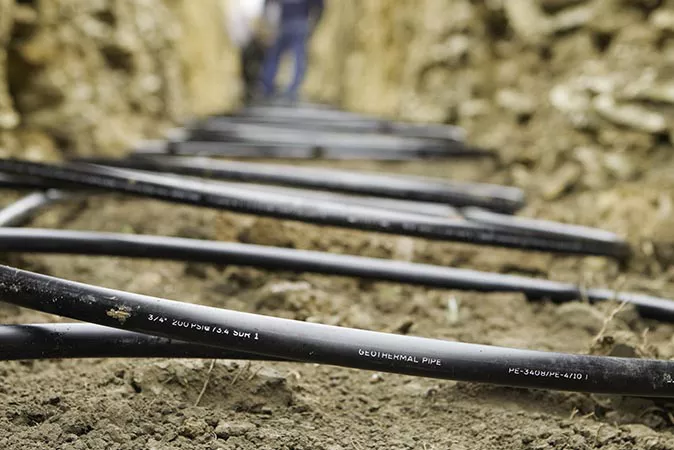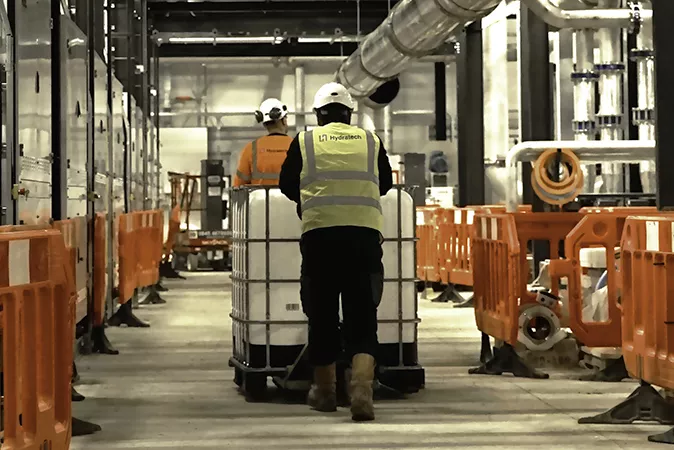In addition to the thermal and pumping characteristics of any heat transfer fluid (HTF), when making the appropriate selection for any heat recovery system it is also important to consider:
• Corrosivity and Corrosion
• Toxicity
• Biodegradability
• Biological susceptibility and durability (aka lifespan)
• Flammability
• Energy efficiency and cost
Corrosivity and Corrosion
Unsuitable and uninhibited HTF can cause corrosion of metal components, as mainly found in the Manifolds, Pump Rooms and Energy Centres of geothermal and GSHP installations. The corroding
part of a component is called the anode, which will tend to dissolve into the HTF and/or coat other metals of higher nobility. E.g., carbon steel will ‘sacrifice’ itself to copper.
Oxidation Corrosion, as caused by air and/or dissolved oxygen, will tend to dissolve metals evenly across their surface, and most often affects metals which do not form passive protective layers or are naturally resistant to oxidation corrosion.
The most susceptible metals to oxidation corrosion include magnesium, zinc (galvanised pipe), cast iron, ductile iron and carbon steel. Whilst iron and steel can be protected using the appropriate corrosion inhibitors, it is virtually impossible to prevent magnesium and zinc from corroding in a submerged aqueous environment, such as a flooded pipework system.
Galvanic Corrosion can take place when two different metals of varying nobility are ‘connected’ by a fluid, which acts as an electrolyte. E.g., HTF inside a geothermal or GSHP system. An electric
potential difference is generated between the metals and the less noble (less precious) metal acts as an anode and dissolves, while the more precious metal acts as the cathode.
Pitting and Crevice Corrosion are typical in installations where metals protected by a passive coating, such as galvanised or some stainless-steel pipes. An increased local corrosion rate can
occur where there is a flaw in the passive coating, when the potential difference is concentrated.
Erosion Corrosion is where metal and synthetic components are worn down over time, due to one or more of the following causes:
• High levels of entrained sediment in the HTF, acting as an abrasive inside pumps and bends.
• Cavitation is most often observed inside centrifugal pumps. E.g., worn impellers and volutes, but can also be found where there are severe changes in HTF direction, or poorly designed pipework etc.
Corrosion Inhibitors
To minimise corrosion, it is very important for HTF to be formulated with effective and proven inhibitors. Specifically, the inhibitor formulation should take into consideration the metals of construction, antifreeze type, susceptibility to air ingress and subsequent bacterial contamination, make-up water quality and effectiveness of pre-commission pipework flushing and conditioning (passivation).
Fluid Monitoring Program (FMP)
To ensure the effectiveness of corrosion inhibitors over and extended periods and appreciating that external factors can influence the life-span of those inhibitors, Hydratech operate the Fluid Monitoring Program. The FMP entails taking periodic HTF samples from each system, for analysis and assessment by Hydratech lab technicians and engineers. An FMP Report is issued for each sample, containing Key Observations and Key Recommendations.
Subject to HTF condition, the FMP Report may recommend remedial treatment, which can be undertaken by the Fluid & Systems Management (FSM) team.
Find out more about Hydratech's FMP here.
















